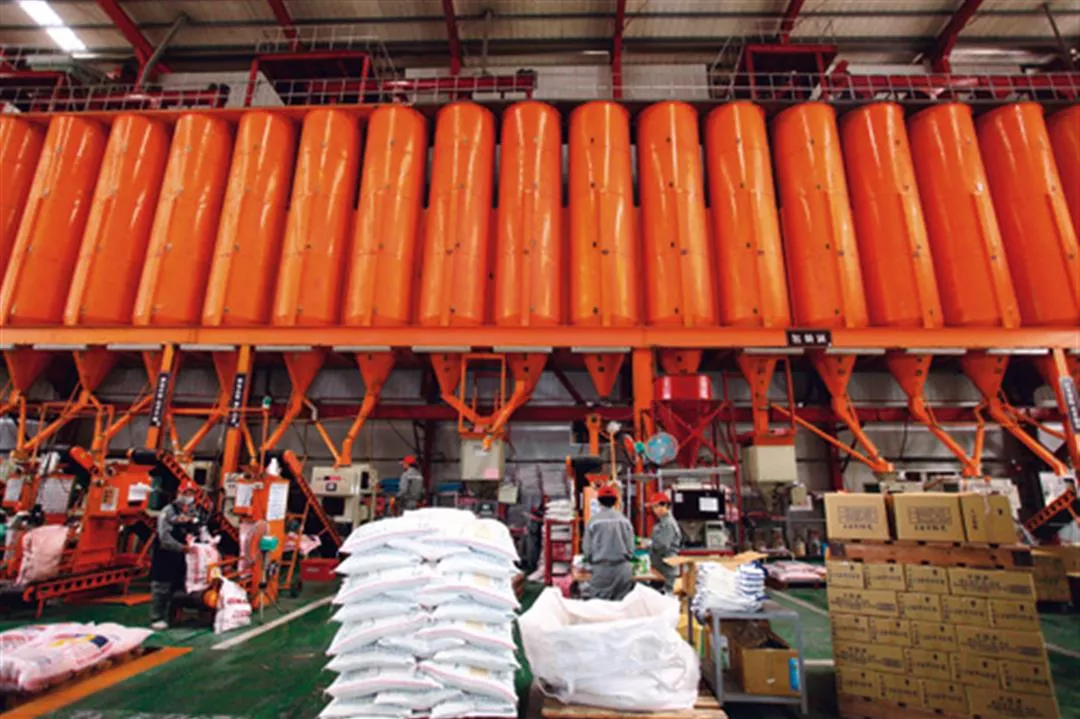Japanese “heavenly rice”
Last year, with the nuclear disaster in Fukushima and flooding in key rice-growing areas, Japan faced a severe shortage of rice. Once Japanese rice brokers grasped the need for imports, the first place they considered was Taiwan. Makoto Hirayama, president of Kitoku Shinryo, Japan’s second-largest rice broker, personally came to Taiwan to visit all its major rice growing regions.
When he visited Union Rice at the end of November, Union’s president Joyce Chuang and director Liu Delong cooked five pots of different varieties of rice, and asked their guest to try each and determine which was best.
After a few minutes, Hirayama held a bowl up with his hand, and Chuang announced publicly that the rice variety was Tainan No. 11, which is planted in more than half of Taiwan’s rice fields. The Japanese testers gave it a score of 80 (for flavor and nutrition), which is very similar to Japanese rice. (In comparison, typical rice marketed in Taiwan scores in the 60–70 range.)
After asking careful questions about how the rice was being grown and milled, Hirayama specified that he wanted Tainan No. 11 from Pitou, and he placed an order for 108 tons. The next day the newspapers were filled with reports about the Japanese visitor describing the rice as “heavenly.”
Kitoku Shinryo followed up with another order for 252 tons, bringing the total to 360 tons for the year, the highest of any year since Taiwanese rice exports to Japan were reinstated in 2004.
Union Rice accounted for 360 of the 400 tons of Taiwan rice that were exported to Japan last year.
Chuang holds that there was nothing surprising about Taiwanese rice earning the affirmation of the Japanese: “10 years ago, the best tasting rice in the world was, in order, Japanese rice, Californian rice, Taiwanese rice and Korean rice. Now, 10 years later, Japanese rice is still number one, but certain strains of Taiwanese rice have surpassed Japanese rice in mouthfeel.”
“Taiwanese agricultural techniques have improved as a result of WTO membership,” says Chuang.
Joining the WTO was disruptive, and it forced Union Rice to think about how it could raise quality. Consequently, it imported a shipment of NT$250-per-kilogram Japanese rice, and then invited some farmers to come in and compare it to Taiwanese rice. After the taste test, the farmers fell silent—uncomfortably confronting the reality that rice produced elsewhere tasted better than Taiwanese rice.
Immediately, Liu Delong and 20 farmers established a production team, which established a collective goal: to grow Taiwanese rice that was just as good as Japanese rice.
Bringing together those 20 “seed farmers” was only the first step. Union Rice went on, under the guidance of the Agriculture and Food Agency (AFA), to establish a zone dedicated to rice production.
Beginning in 2005, the AFA established several dedicated rice production zones in various locales around Taiwan. The government assisted brokers, planters and processors to agree contracts, thus helping to lay the groundwork for a chain of production and economies of scale, by effectively combining the scattered fields of small producers. Looking to the marketplace for direction, the government also outlined standard production methods. (For instance, it offered a selection of rice varieties and fertilizers to use and designated standards for pesticides.) The upshot was that the farmers would grow exactly the kind of rice the brokers wanted.
After two years under government guidance, Union Rice decided to set out on its own. By the end of 2011, the company had garnered orders from Japan that totaled 360 tons. The government was extremely proud, and President Ma Ying-jeou went to Union’s rice mill to offer his congratulations.
According to the AFA, from 2005 to 2011, the number of farmers in Taiwan participating in the special rice production zones increased from some 2000 to 5000, and the total area under cultivation in those areas increased from 5000 to 14,000 hectares. Meanwhile, the value of production from a hectare in the areas was NT$26,000 higher than from a hectare outside.

Last year Union Rice, makers of the Zhong-xing brand, exported 360 tons of rice to Japan, the biggest order from that country ever. The photo shows the packaging zone in the Union Rice factory.